The S&P 500 just posted its first down quarter since the third quarter of 2015. Prior to the latest quarter, the S&P 500 saw gains in 19 out of 20 quarters going back to the start of 2013. This included gains in 15 straight months, a streak which was broken in February of this year….
Animal Spirits Episode 23: The Lump Sum
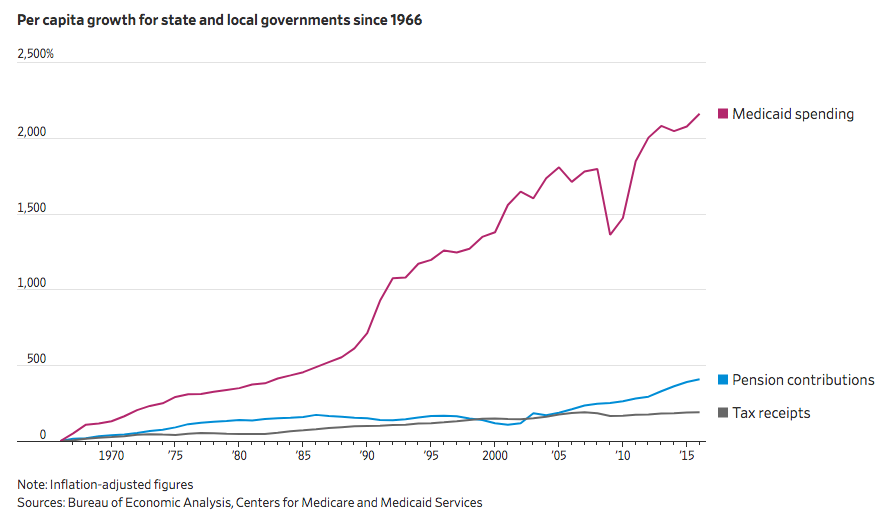
On this week’s Animal Spirits with Michael & Ben we discuss: What to make of stocks and bonds both falling in the first quarter. Would you rather take $1 million now or $1,000 a week for life? Why states are so strapped for cash. How the world has changed since 2008. Why people make emotionally…
Inflation is a Bigger Risk to Stocks Than Rising Rates
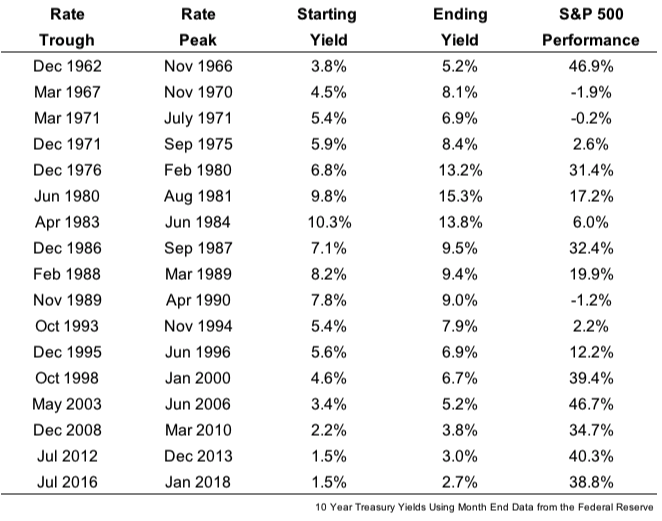
I get a lot of questions from investors — clients and readers alike — and one of the most frequent questions deals with how rising interest rates will impact the markets. People have been worrying about this since rates began to fall in the midst of the financial crisis. This relationship is typically not what…
How to Build Trust
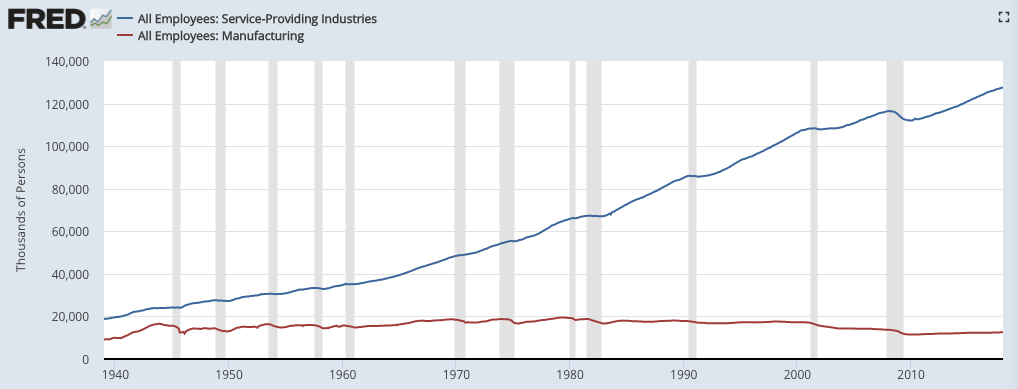
Manufacturing is not exactly dead in the United States but it certainly doesn’t have as much of an impact on the employment front as it once did: Many in the older generations are unwilling to accept this fact but we are a service-based economy and that’s not going to change anytime soon. The difficult part…
Regression to Lumpy Returns
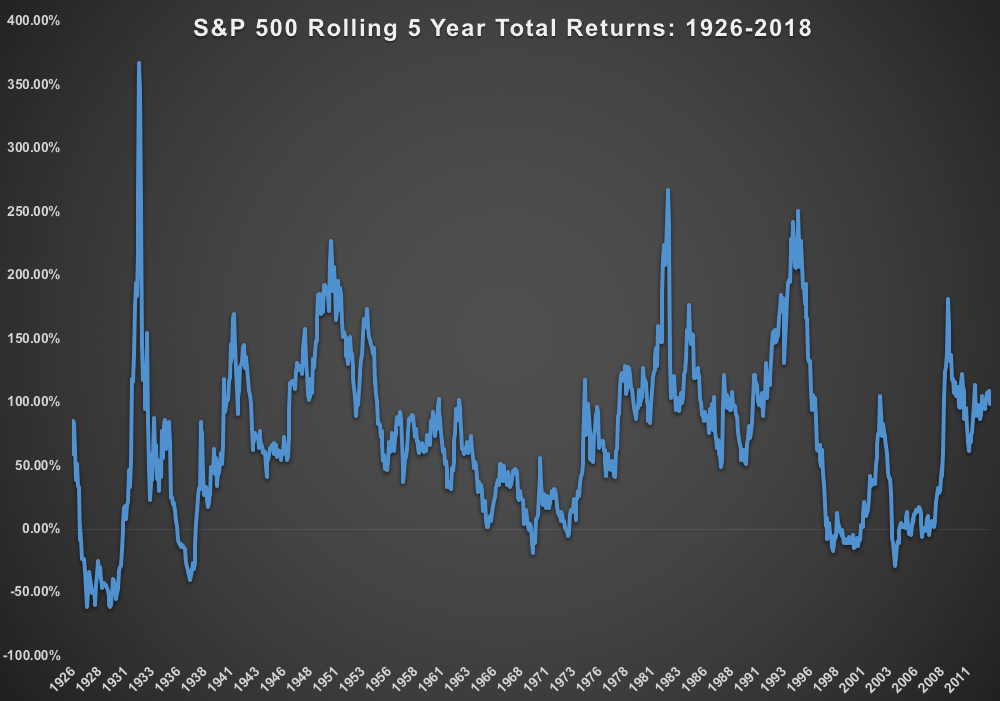
From 1928-2017, the S&P 500 showed an annualized average return of roughly 9.6% per year. From 2009-2017, the S&P 500 showed an annualized average return of roughly 15.1% per year. One of these data points is unsustainable (okay maybe both). The S&P 500 would have to go nowhere for the next 5 years to bring…
That Time a U.S. Senator Tried to Actually Me
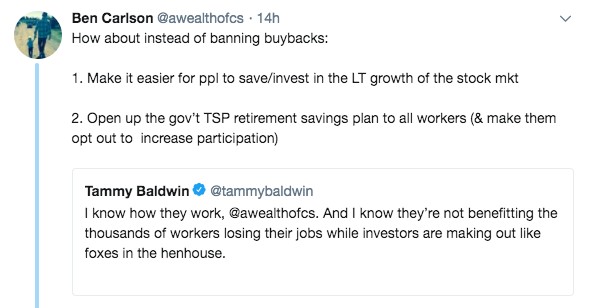
Here’s something you don’t see every day: This was a tweet sent by a Senator from Wisconsin in response to a piece I wrote for Bloomberg this week about a bill she proposed to ban share buybacks. My main point was that share buybacks are not as evil as some people in politics or the…
Animal Spirits Episode 22: Horizontal Support
On this week’s Animal Spirits with Michael & Ben we discuss: Why the current low interest rate environment is so challenging for investors. Why share buybacks get such a bad rap. The psychological difference between dividends and buybacks. The difficulty in running a hedge fund. Why wealthy investors prefer to pay higher fees. The problem…
What Is a Bond Bear Market Anyways?
There are many definitions and rules of thumb in the finance world. Most are arbitrary since the markets are more art than science. People often throw around terms without providing justification or context. “Bond bear markets” seem to fall under this category. In this piece I wrote for Bloomberg I discuss why a bond bear…
On The One Hand…
On the one hand, this doesn’t look normal: Stocks basically had a flash correction from all-time highs, rebounded a decent chunk of those losses, and have now continued falling into correction territory. On the other hand, there is no playbook for stock market corrections and bear markets. Assuming markets are going to follow the same…
The Benefits of Working Remotely
In a recent blog post, billionaire Richard Branson discussed the benefits of a flexible work schedule that allows you to work remotely. His thoughts on this were shaped by the fact that Branson himself wanted to work more out of the office following the birth of his first son. He laid out 4 reasons employers should…
